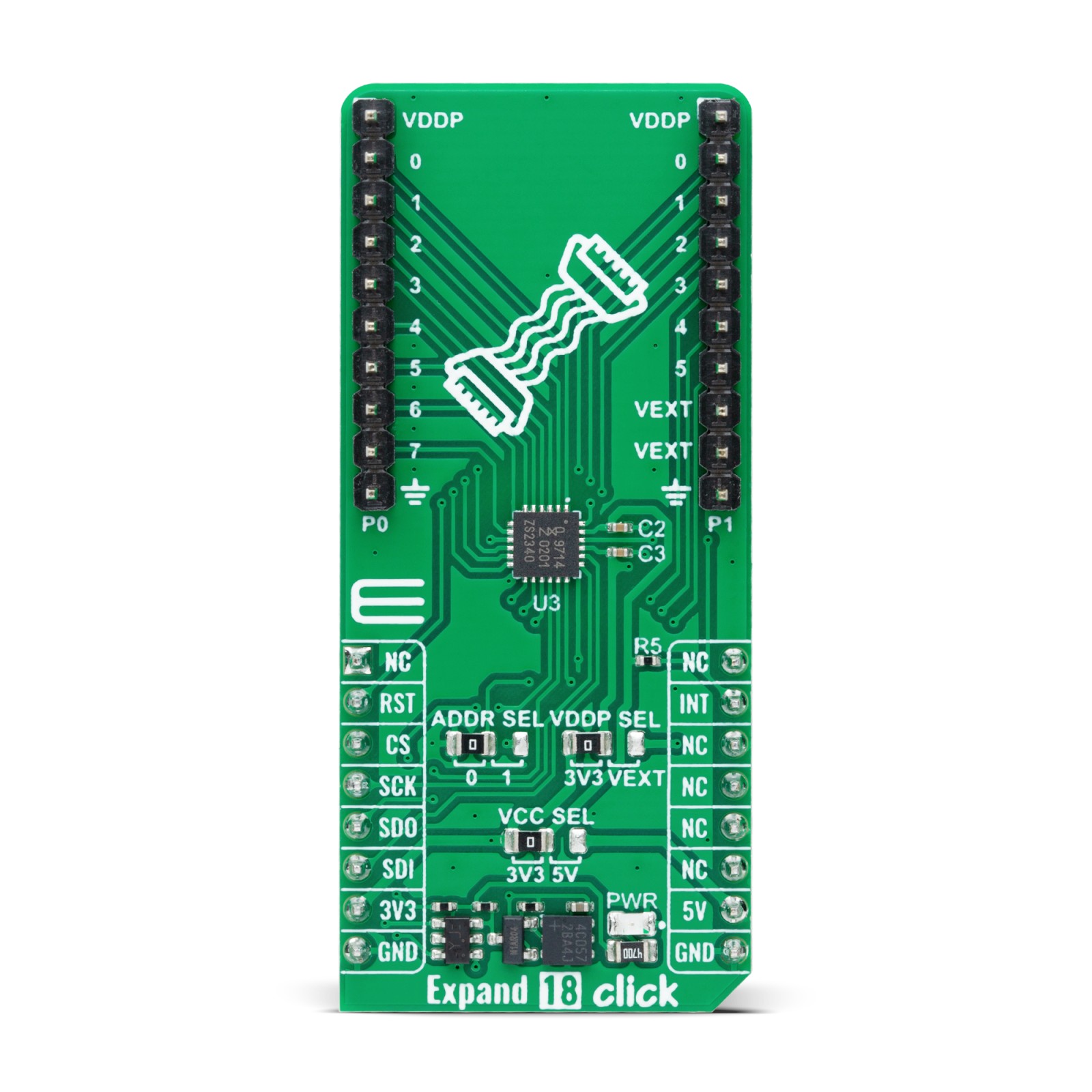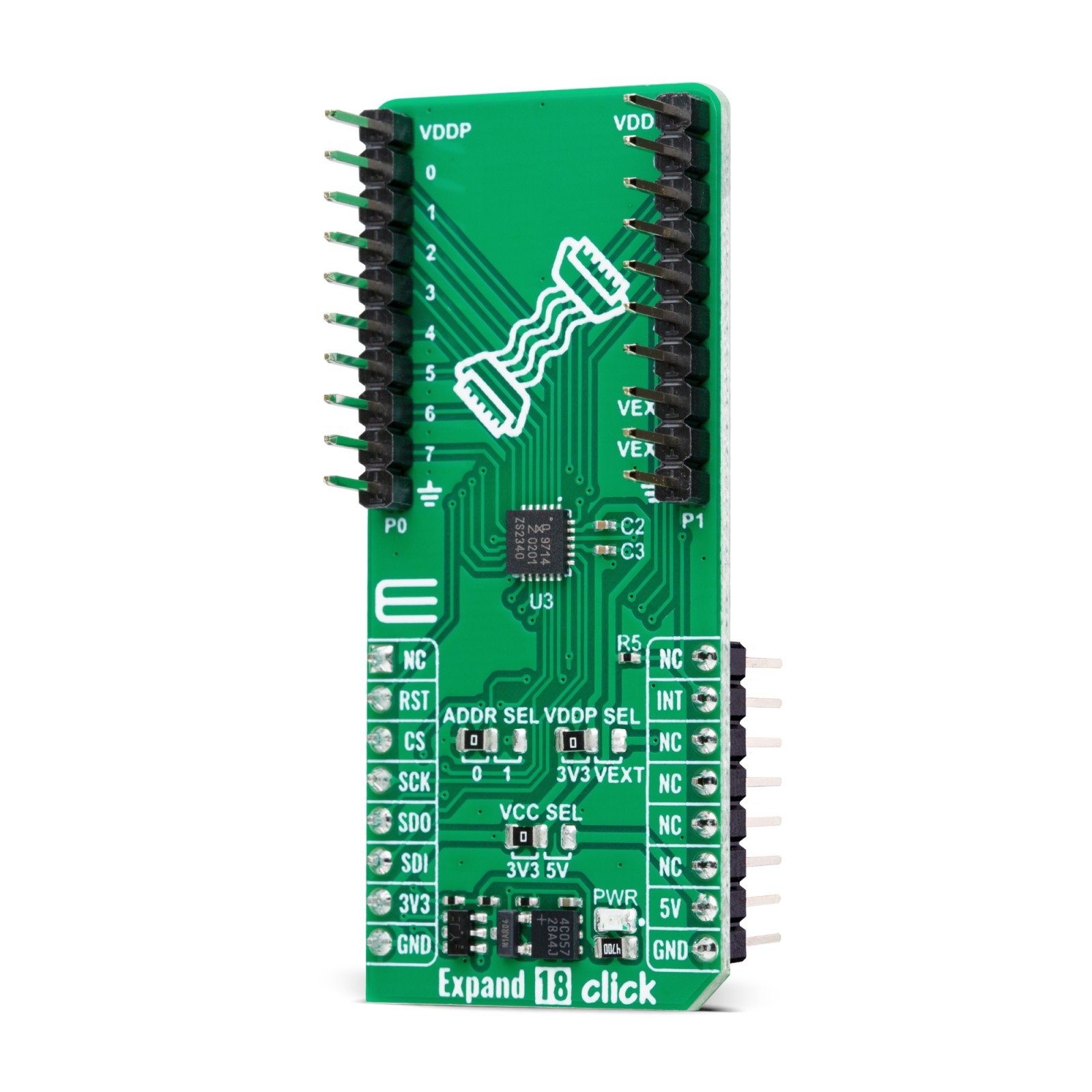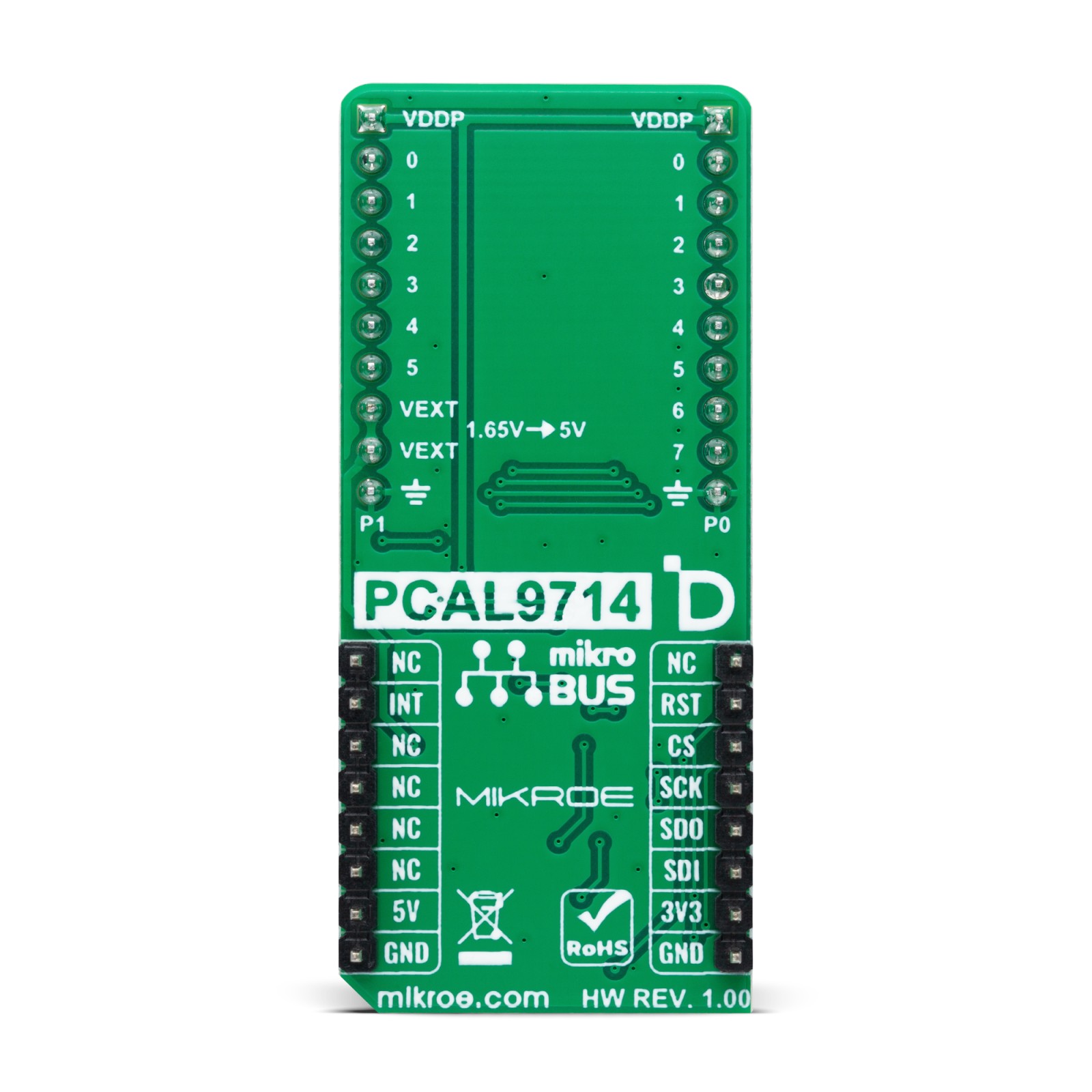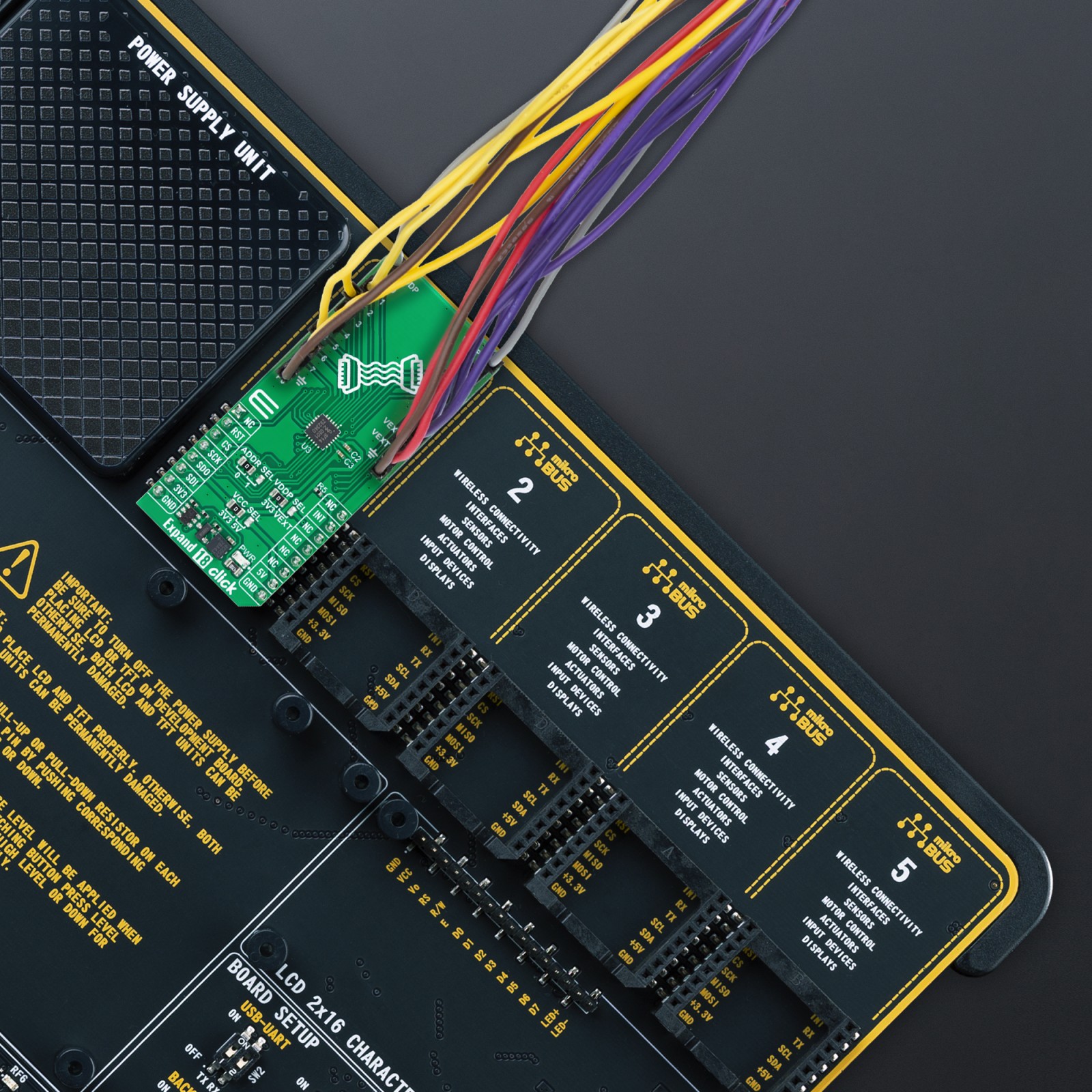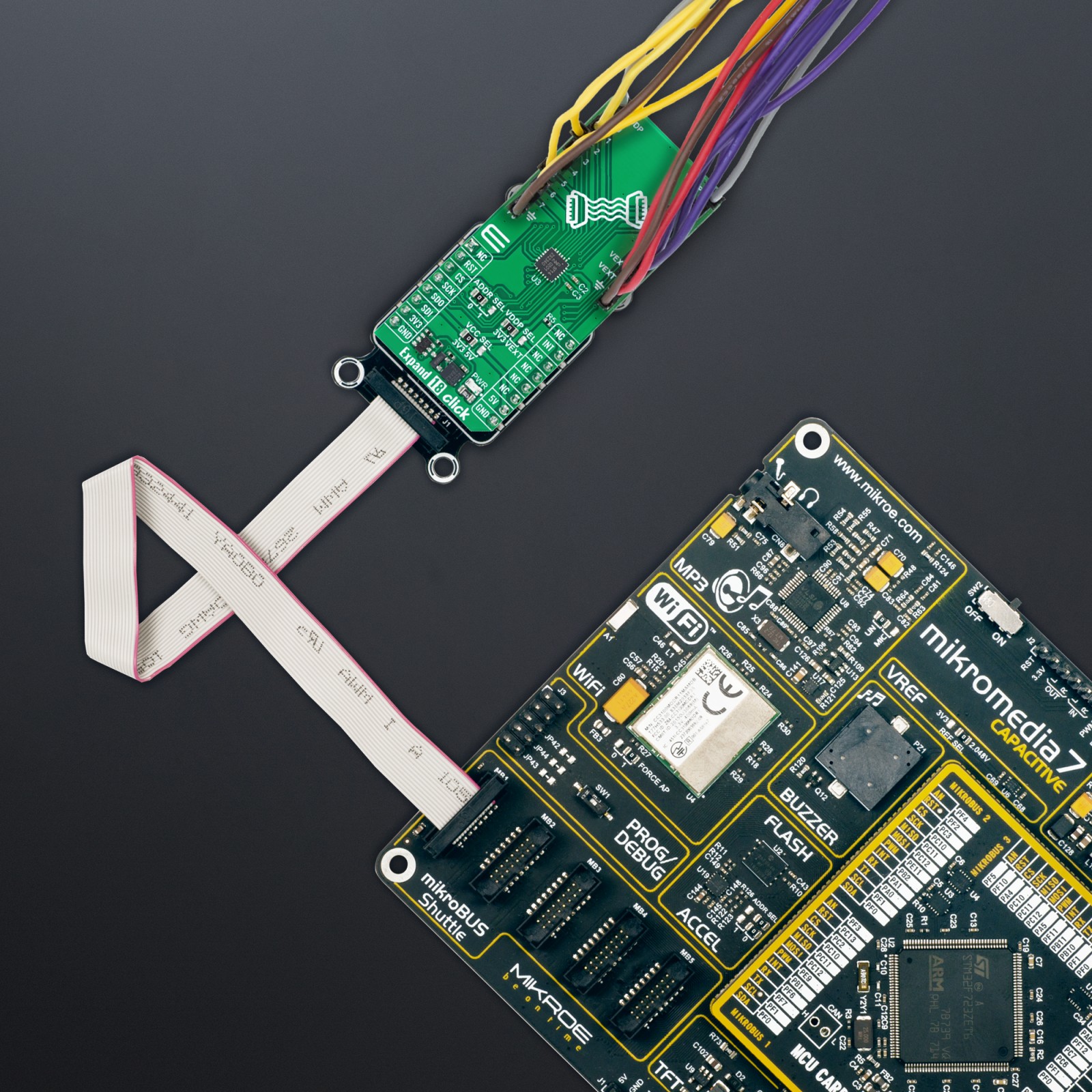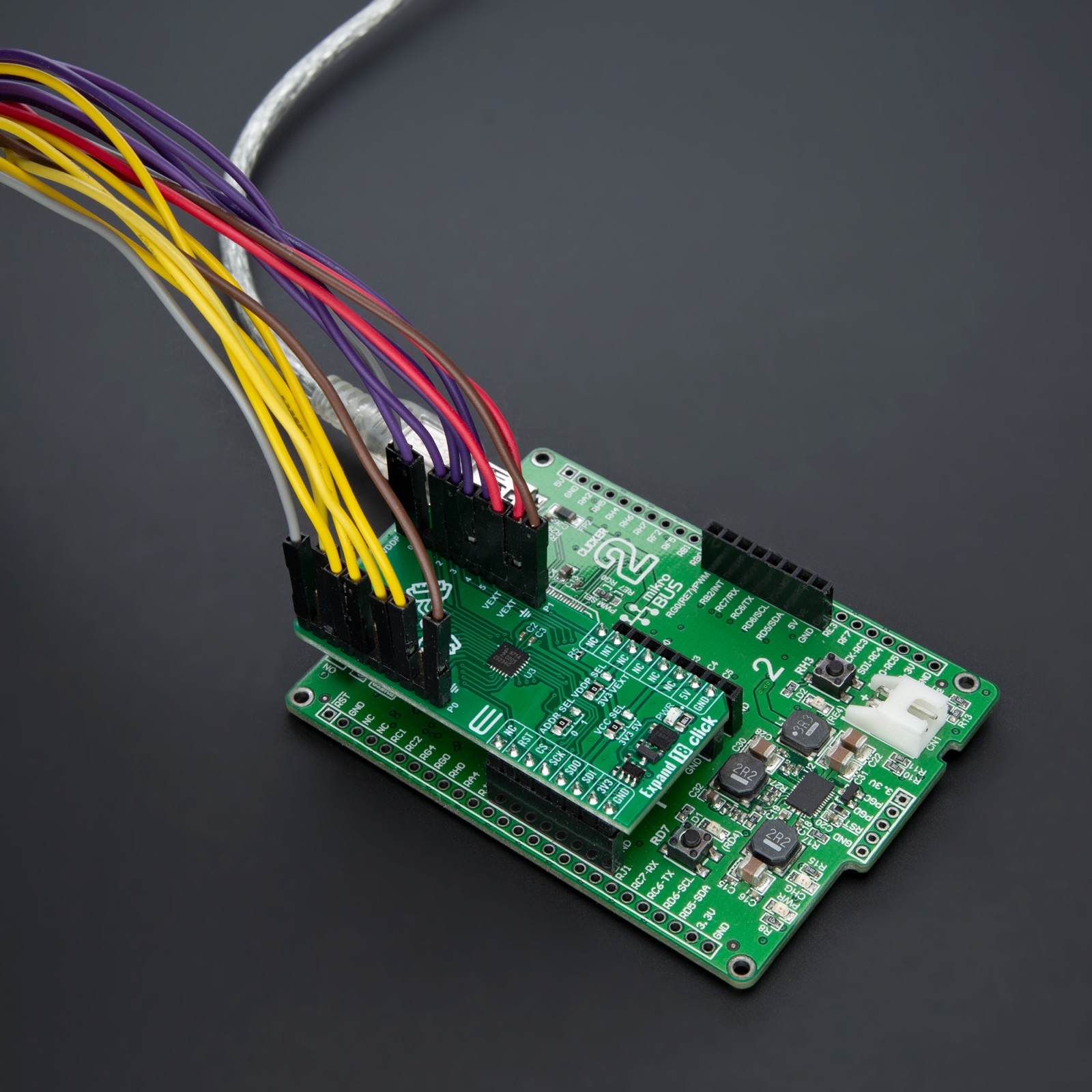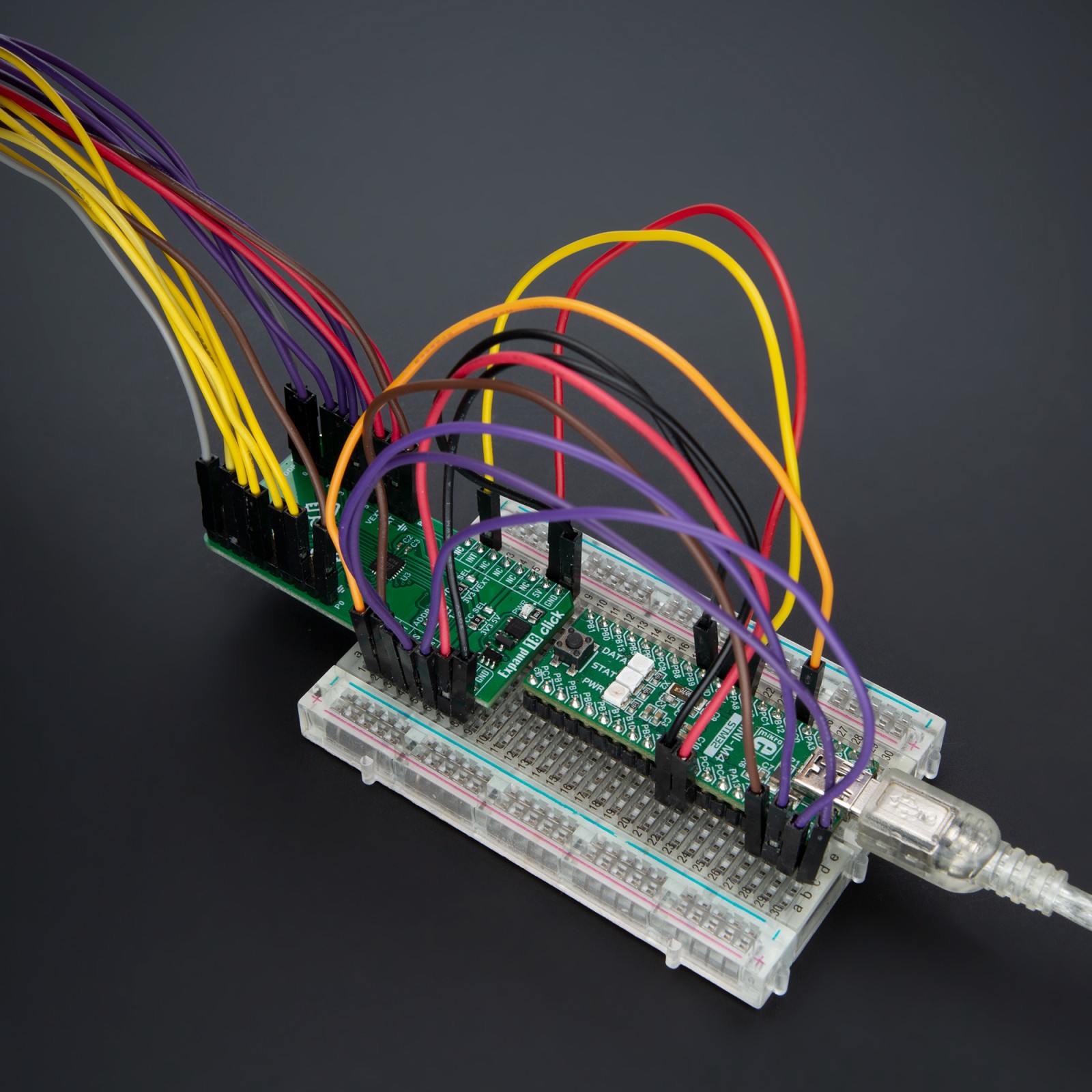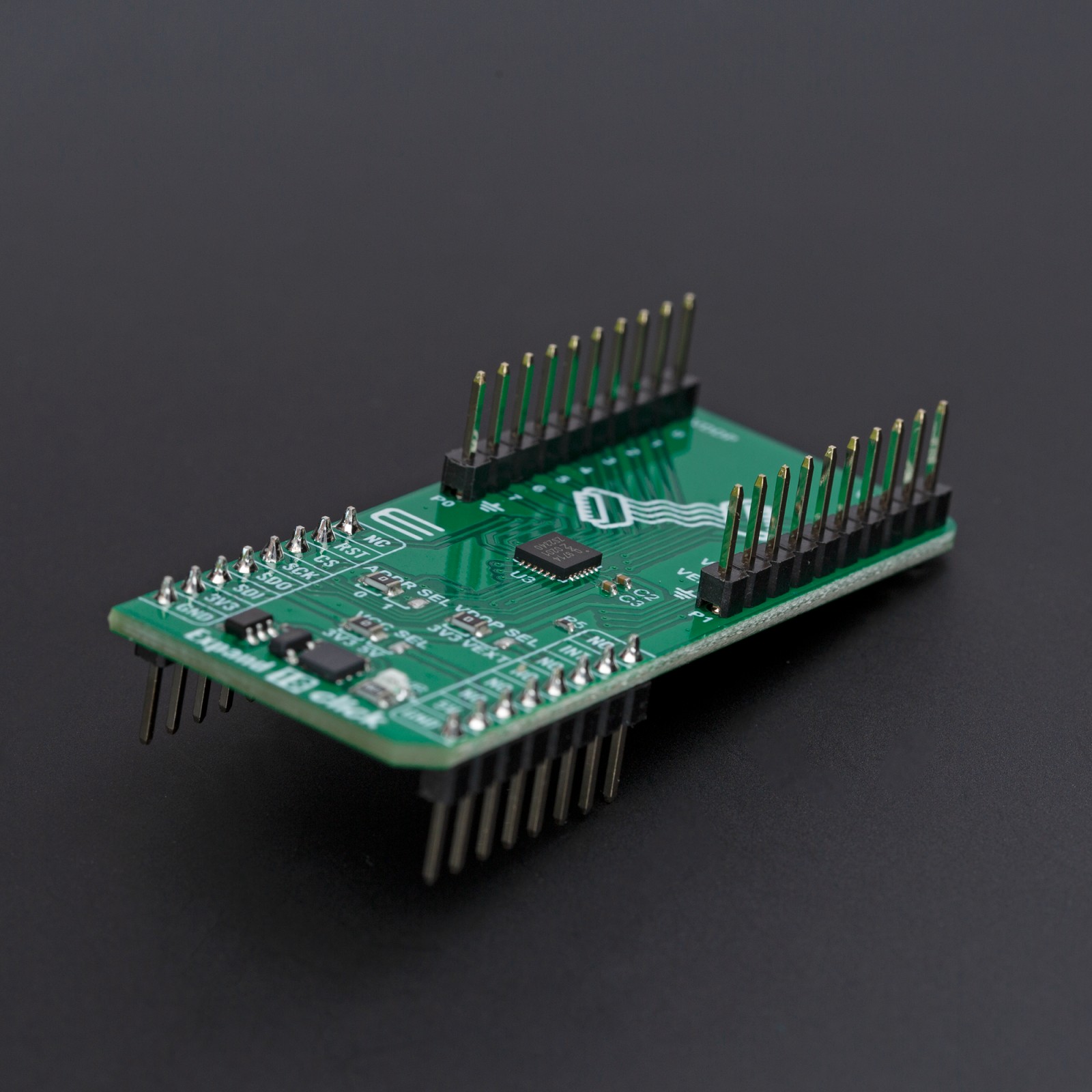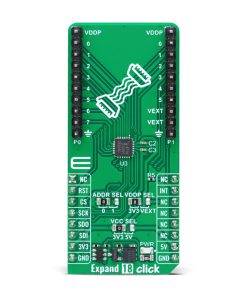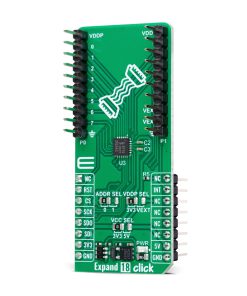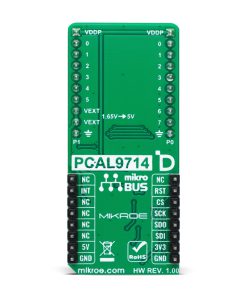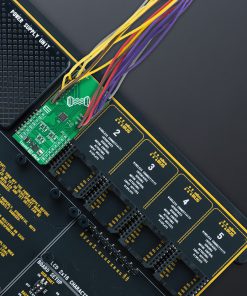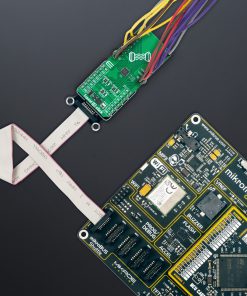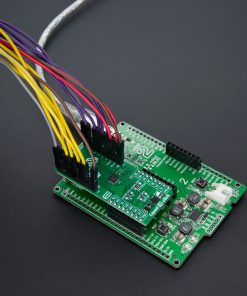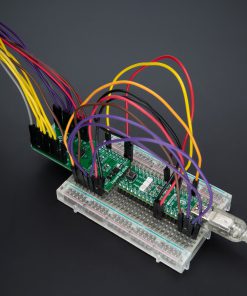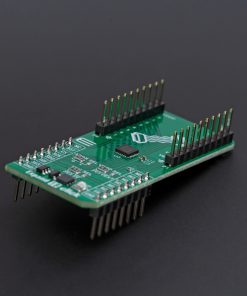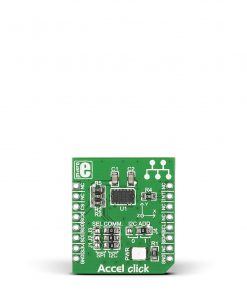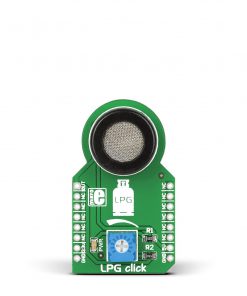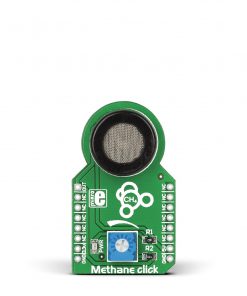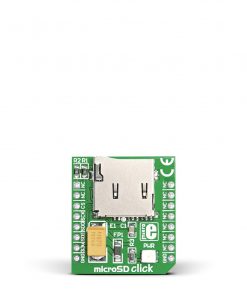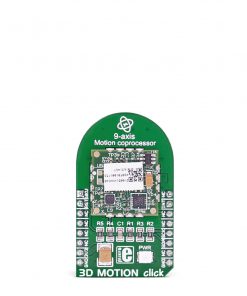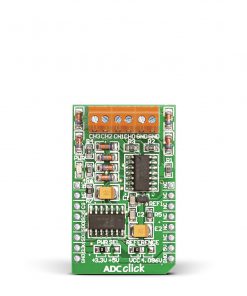Expand 18 Click is a compact add-on board used for expanding the I/O capabilities of various microcontroller (MCU) systems. This board features the PCAL9714, an ultra-low-voltage 14-bit SPI I/O expander from NXP. This board supports both 3.3V and 5V logic levels, features integrated level shifting for mixed-voltage systems, and operates via a high-speed 5MHz SPI interface. Additionally, it offers Agile I/O capabilities such as programmable output drive strength, latchable inputs, and interrupt management. Expand 18 Click is ideal for interfacing MCUs with sensors, keypads, and push buttons in power-sensitive applications.
Expand 18 Click is fully compatible with the mikroBUS™ socket and can be used on any host system supporting the mikroBUS™ standard. It comes with the mikroSDK open-source libraries, offering unparalleled flexibility for evaluation and customization. What sets this Click board™ apart is the groundbreaking ClickID feature, enabling your host system to seamlessly and automatically detect and identify this add-on board.
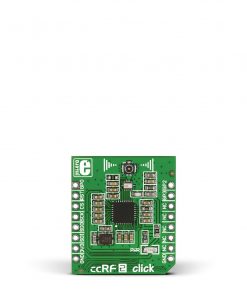 ccRF2 Click
1 × R820.00
ccRF2 Click
1 × R820.00 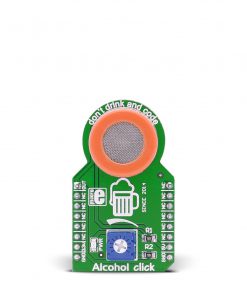 Alcohol Click
1 × R345.00
Alcohol Click
1 × R345.00 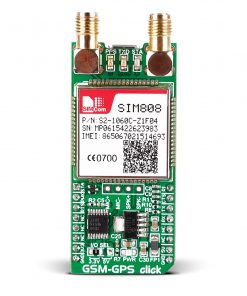 GSM-GPS Click
1 × R1,350.00
GSM-GPS Click
1 × R1,350.00 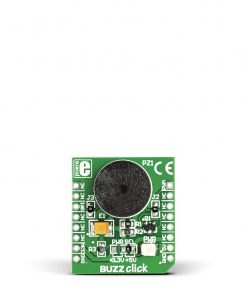 BUZZ Click
1 × R120.00
BUZZ Click
1 × R120.00 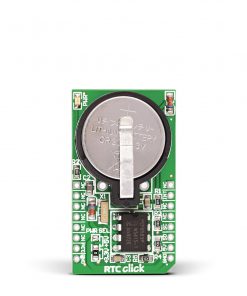 RTC Click
1 × R400.00
RTC Click
1 × R400.00 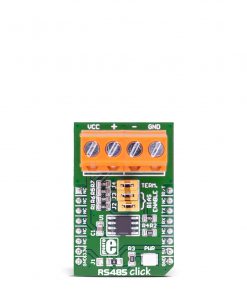 RS485 Click 5V
1 × R240.00
RS485 Click 5V
1 × R240.00 
